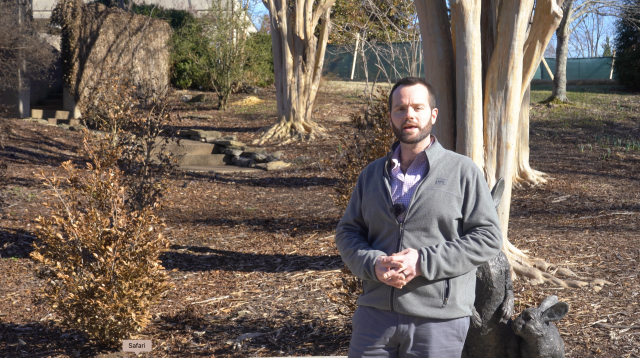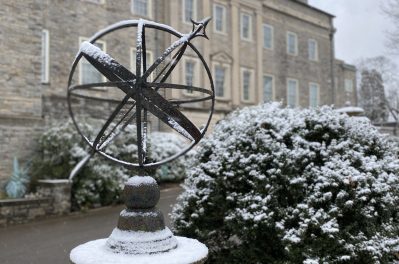The Winter Freeze: Advice for Your Garden
We typically find ourselves concerned with cold weather in the garden in mid to late spring when we worry about frost damaging our new spring annuals and tender magnolia blossoms. Plants initiating vegetative growth and even flowering in the early spring are in a very different physiological state from winter dormancy, and the most typical mechanism for cold damage comes when frost (ice crystals) formed on the leaves amplifies solar radiation and effectively creates a sunburn.

Dormant plants with varying levels of cold resistance can withstand freezing winter temperatures by moving water into intracellular space, where the water freezes and protects the important cell parts in a supercooled state. Plants’ ability to survive this dehydrated state through colder temperatures and for extended periods of time determines cold hardiness. A lack of hardiness is the second mechanism for cold damage to plants.
Cheekwood recommends a three-part response to the recent damage in our gardens: (1) be patient with broadleaf evergreens most impacted by the freeze, (2) worry less about the herbaceous perennials, which are insulated by the ground, and (3) leverage the freeze event against evaluating the plants in your collection.
Broadleaf evergreens are highly susceptible to flash freezes, as each leaf is a thin layer of tissue directly exposed to freezing air, including wind chills. We may expect, and can already observe, extensive damage to evergreen foliage, if not total die-back. Patience is required to determine which tissues, e.g., buds and stems, were affected by the freeze and to what extent – literally, how far ‘down the stem’ the plant is damaged. Cheekwood anticipates significant damage to evergreen foliage (laurels), fully formed flower buds (Camelias), and in some cases, the last 2-3 years of stem growth (hollies and viburnum). Other plans may die completely.

The third mechanism for cold damage occurs when temperatures drop rapidly and ice crystals form inside plant tissue, rupturing cell membranes and cell walls. Freezing water lines and related damage around your home is a serviceable analogy for this phenomenon and the rapid drop in temperature over Christmas weekend created this third and most catastrophic form of cold damage.
The concerned gardener may inspect their plants by bending and lightly scratching stems, beginning at the tips, and moving toward the center of the tree or shrub. Supple, flexible stems that reveal light green tissue beneath the outermost layers of bark likely remain viable. Flaccid, fragile stems that break easily and are comprehensively brown or black are likely dead. Final determinations with respect to pruning and removals are most responsibly made after plants begin to break dormancy and push new growth.
We are less concerned about herbaceous perennials, as the overall freeze event was brief and unlikely to overcome the insulating properties of the ground. Home gardeners may certainly begin their spring cleanup efforts early, cutting back unsightly burned foliage and applying fresh layers of compost and mulch.
The inevitable loss of plant material is not without opportunity, and Cheekwood recommends evaluating your gardens for invasive species and plants that are less friendly to wildlife, e.g. certain privets and nandina, respectively.
Finally, the question remains about selecting replacement plants. Boxwood and needled evergreens, such as true Taxus are safe options, but the enthusiastic gardener should not be discouraged from perseverance and replanting our beloved broadleaf evergreens. USDA cold hardiness is determined by annual minimum temperatures, and the recent freeze event will not ‘move the needle’ with respect to hardiness zones – we won’t wake up in May to a new editions of our favorite gardening books forbidding us to plant laurels and osmanthus in middle Tennessee. Horticulture is the art and science of growing plants, and gardening is the experience of inviting Mother Nature into our homes and backyards and living together with our favorite plants. Extreme weather events such as the Christmas freeze should inform, but not dictate our decisions this spring, as we move forward into the new year with our plants and gardens.
